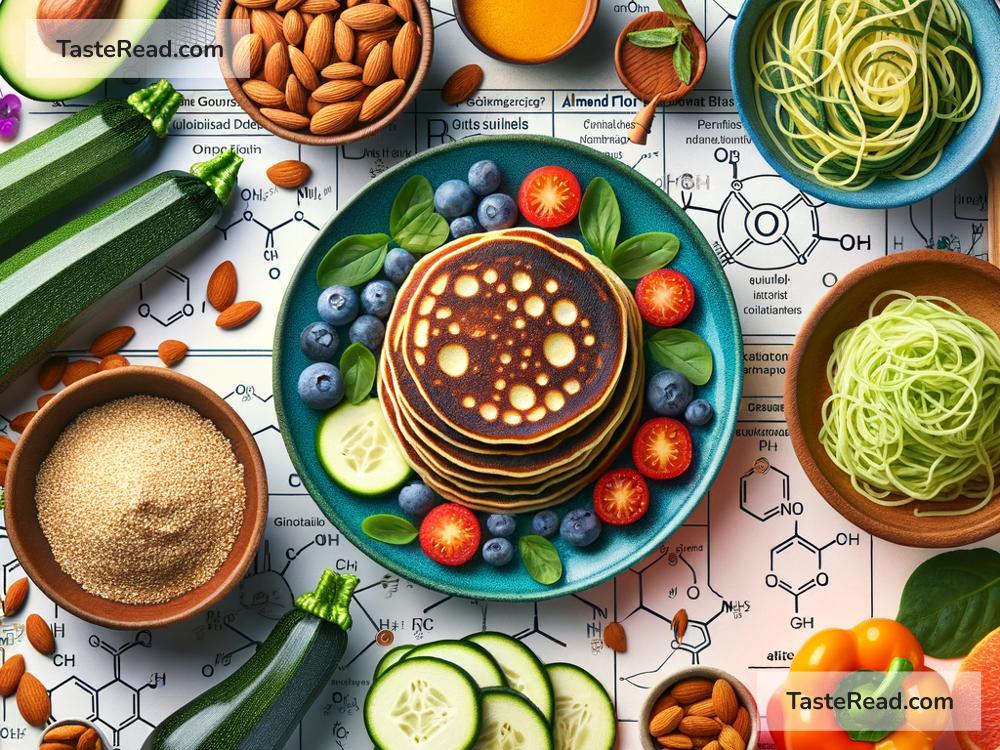The Science of Gluten-Free Diets Explained
Gluten-free diets have become popular in recent years, with more and more people opting for gluten-free products or cutting gluten out of their meals altogether. But what exactly is gluten, and why do some people avoid it? In this article, we’ll explore the science behind gluten-free diets in simple terms, so you can understand what gluten is, why some people have issues with it, and whether going gluten-free is the right choice for you.
What Is Gluten?
Gluten is a type of protein found in certain grains, including wheat, barley, and rye. It’s what gives bread its stretchy texture and helps pizza dough keep its shape when tossed. Think of gluten as the “glue” that holds food together—it’s essential for giving baked goods their structure.
Gluten is everywhere! It’s found not only in obvious foods like bread and pasta but also in processed items such as sauces, salad dressings, soups, and even some candies. For most people, eating gluten isn’t a problem, but for others, consuming it can lead to health issues.
Who Needs to Avoid Gluten?
There are three main groups of people who avoid gluten for health reasons:
-
People with Celiac Disease:
Celiac disease is a serious medical condition. When someone with celiac disease eats gluten, their immune system attacks the lining of their small intestine. This damage can prevent the body from absorbing important nutrients and lead to symptoms like diarrhea, abdominal pain, fatigue, and weight loss. Over time, untreated celiac disease can cause long-term complications like vitamin deficiencies, osteoporosis, and even neurological problems. The only treatment for celiac disease is a strict gluten-free diet. -
People with Non-Celiac Gluten Sensitivity:
Some people don’t have celiac disease but still feel sick after eating gluten. They might experience bloating, stomach pain, headaches, and fatigue. This condition is called non-celiac gluten sensitivity, or NCGS. Scientists aren’t exactly sure why gluten causes discomfort for people with NCGS, but avoiding gluten often helps alleviate their symptoms. -
People with Wheat Allergy:
A wheat allergy is different from celiac disease or gluten sensitivity. In this case, the immune system identifies proteins in wheat (not just gluten) as harmful and reacts by triggering allergy symptoms. These symptoms can range from mild, like sneezing and rashes, to severe, like anaphylaxis. People with wheat allergies need to avoid wheat, but they might still be able to eat gluten from other grains, like barley or rye.
What Happens Without Gluten?
For people who need to avoid gluten, removing it from their diet eliminates health issues and improves their overall quality of life. But gluten-free diets can be tricky. Gluten is a common ingredient in many staple foods, so people on gluten-free diets have to carefully read labels and find alternative options.
Thankfully, there are plenty of gluten-free alternatives available, such as:
- Gluten-free pasta made from rice, quinoa, or lentils.
- Bread and baked goods made with almond, coconut, or chickpea flour.
- Naturally gluten-free grains and starches like rice, corn, potatoes, and oats (as long as they’re certified gluten-free to avoid cross-contamination).
Living gluten-free can require planning and creativity, especially when eating out or traveling. However, with growing awareness and demand for gluten-free products, it’s easier today than ever to follow this diet.
Is Going Gluten-Free Healthy for Everyone?
You might have noticed that gluten-free products are marketed heavily, often with claims like “healthier” or “better for digestion.” While gluten-free diets are essential for those with celiac disease, gluten sensitivity, or wheat allergy, most people don’t need to avoid gluten to be healthy.
If you don’t have a gluten-related health issue, cutting out gluten won’t necessarily make you healthier. In fact, some gluten-free products are highly processed and may contain extra sugar or fat to make up for the lack of gluten. Additionally, gluten-free diets can sometimes be lower in fiber, as many whole-grain foods contain gluten.
A balanced diet that includes whole grains (like whole wheat or barley) is generally more nutritious for those who can eat gluten without problems. Gluten itself isn’t harmful to most people—it’s just another type of protein.
So, Should You Go Gluten-Free?
The decision to go gluten-free depends on your health and lifestyle. If you’ve been diagnosed with celiac disease, gluten sensitivity, or a wheat allergy, then cutting out gluten is essential. However, if you don’t have these conditions, there’s no proven benefit to avoiding gluten. In fact, going gluten-free without a medical reason can be more expensive and less nutritious.
If you suspect that gluten is causing you health issues, talk to your doctor before making any changes to your diet. They may recommend tests to determine if you have celiac disease or other gluten-related problems. Self-diagnosing can be tricky, so it’s important to get expert guidance.
Final Thoughts
Gluten-free diets are a necessary lifestyle for some and a choice for others, but they aren’t a one-size-fits-all solution. Science shows that gluten is safe for most people, but for those with celiac disease, gluten sensitivity, or wheat allergies, avoiding gluten is critical to their health.
Understanding the science behind gluten-free diets can help you make informed decisions about your own eating habits. Whether you eat gluten or avoid it, the goal is the same: to nourish your body with the foods that make you feel your best. Always remember, a healthy diet is one that works for your unique needs!


